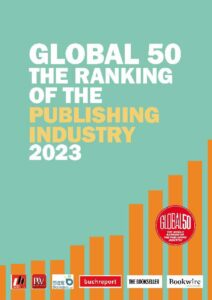The Digital Consumer Book Barometer 2020 is out: Sales developments and consumer behavior in international ebook and audiobook markets
Digital Barometer, edition of 2020, part 01
Released on June 2nd, 2020, at Readmagine
Ready for free download now. And don’t forget to register for our newsletter to get the updates in July and September!
About the Digital Consumer Book Barometer 2020
The Digital Consumer Book Barometer, started in 2018, provides intelligence on sales and consumer developments in the ebook and audiobook segments for download, streaming, subscription and lending in a number of relevant international markets outside of the well documented English-language territories.
The Digital Barometer is based on aggregated sales data on (French-speaking) Canada, Germany+Austria+Switzerland (DACH), Italy, Spain, Brazil, Mexico, and English language imports into these markets, provided by a group of digital distributors and aggregators, including Bookwire, DeMarque, edigita, Ingram Content Group, Libranda, and Readbox. The Barometer is an initiative by Rüdiger Wischenbart Content and Consulting (www.wischenbart.com).
General observations
With digital sales data spanning from 2016 to 1Q2020, the Digital Barometer 2020 analyzes market developments into the early days of the Covid-19 pandemic and the initial stages of its impact on the book business. It can thereby serve as a solid benchmark for measuring the complex ways of how book consumption is currently re-shaped by multiple driving forces.
In general, we observe through the Barometer, how developments and shifts in ebook reading and audiobook consumption got reinforced in the early weeks of the pandemic, and how the various available formats (ebooks, audiobooks), distribution channels and business models (download, subscription, streaming, lending) have become well accepted forms of book consumption by a digitally savvy audience, used to hybrid – alternating digital and physical – approaches.
We see in particular, how marketing initiatives by either strong retailers or publishers can trigger meaningful peaks in the market penetration of a single title or, even more forcefully, of a series or a cross-media combination of a book and a film.
When such marketing energy coincides with a sudden context shift, as happened with the lockdown in response of the pandemic, the impact is huge. In the case of Germany, in the two weeks following the closure of schools, the average daily volume of downloaded audiobooks rose, depending on the genre category, between 100% and 320% by comparison to the preceding weeks.
However, later through the lockdown, consumption declined again, putting a question mark on the long-term sustainability of the initial gains in the crisis. Remarkably, the immediate growth in audiobook streaming was more modest, yet also more lasting.
Significant differences, often building on a broader and more fundamental market evolution over the previous two or three years, can be identified by genre category as well as by format and distribution channel.
As documented by the Digital Barometer in much detail, the digital consumer book market became very dynamic and at the same time strikingly segmented. In general, prices have come under pressure. Price points around 5€, under 10€ and under 13€ seem to meet consumer expectations best, with clear and complex specific “sweet points” for each genre category (like fiction, romance, children and young adult, or education), as well as format (ebooks, audiobooks).
In audiobook streaming, and in audiobook downloads, books for children and young adults have, expectedly, gained reach as the lockdown closed schools and kindergartens, while noticeably nonfiction could not take advantage from the new situation.
Also in a long-term development, the Digital Barometer documents how the share of bestselling ebooks is increasing (measured as the share of the top100 titles out of the top 1000 overall. and in most genre categories).
Comparisons between ebook and audiobook developments across international markets highlight huge differences. In markets that already existed under fragile economic conditions, like Italy and Spain, price pressure is much more radical, with hardly any sales recorded above a threshold of 10 euros. Audiobooks, as a new and rapidly growing segment in Germany, across Scandinavia and in the English language, has so far not found a similar appreciation in Southern Europe. Also, the prominence by genre category varies widely between territories and book audiences.
In Latin America, an entirely different distribution between genre categories is shaping the digital consumer book markets, with education and nonfiction being clearly predominant.
The Digital Consumer Book Barometer provides a granular and detailed toolset for understanding all these complexities and shifting patterns, segment by segment and territory by territory. It shares insights that allow learning lessons between different international markets as well as specific to the expanding models of reaching and growing audiences in streaming, subscriptions, and lending. And it fosters the professional debate to steer ventures across the challenges of today’ book and publishing industries.
Outlook and thanks to our sponsors and partners
The Digital Consumer Book Barometer is to be released on June 2nd, 2020 at the virtual Readmagine conference and Digital Publishing Summit, which is jointly organized by EDRLab, the Fundación Germán Sánchez Ruipérez (FGSR), the International Publishing Distribution Association (IPDA) and Fande.
The Digital Barometer has been made possible by the support of our sponsors, Bookwire (www.bookwire.de ), DeMarque (www.demarque.com ), and IPDA (www.ipdaweb.org )
An updated and extended version of the Digital Barometer with a detailed chapter documentation the impact of the Covid-19 pandemic will follow up in early July 2020, and another updated is prepared for September 2020.
Downloads of the Digital Barometer as well as selected charts will be available at our sponsors’ websites and at www.global-ebook.com



